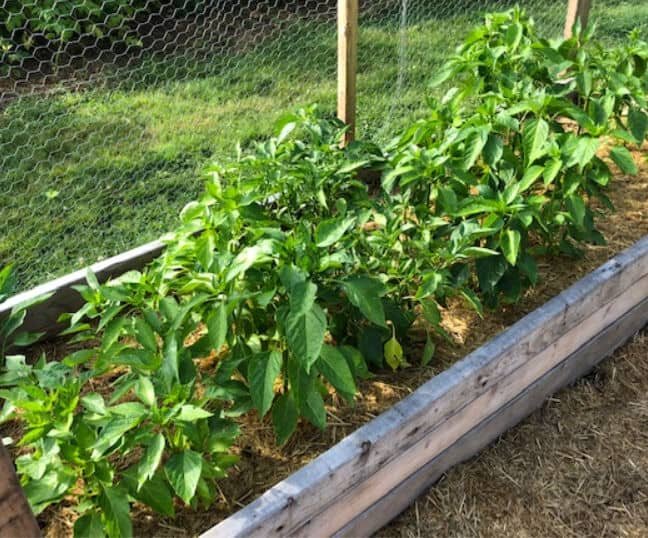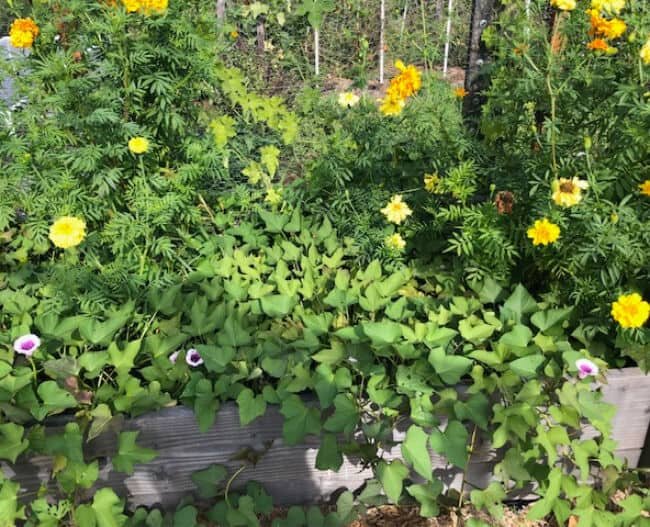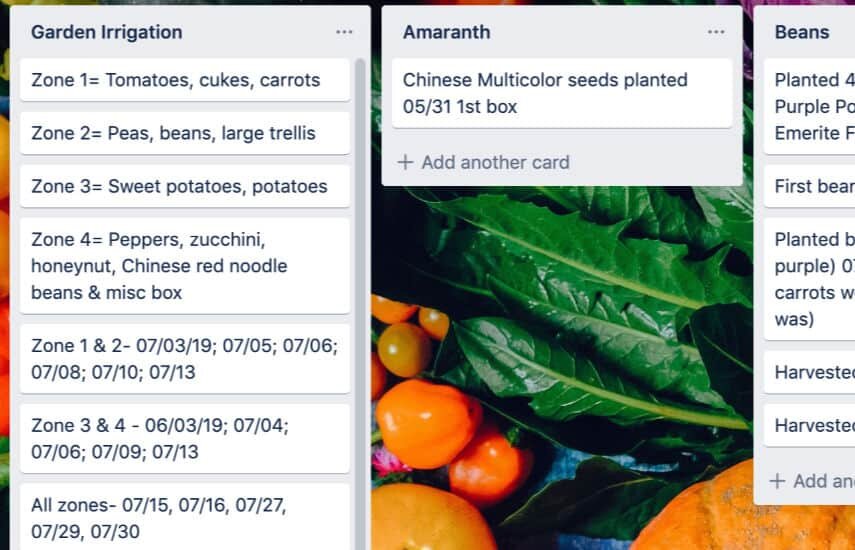Five Things that Worked for Me and Might Work for You, too!
As this year’s gardening season comes to an end, I’m looking back on what worked (and what didn’t!) to try to make next year even better.
Do you go back and evaluate what worked and what didn’t each year? It’s a valuable practice that will reap rewards in years to come as you learn what works and what doesn’t in your own garden.
Everyone’s garden is just a bit different, even your next door neighbor’s garden will have different microclimates, slightly different soil structure and makeup, and even different sun and shade patterns. Knowing precisely what works in your garden in the long-term is the best way to ensure success.
Disclaimer: You can never truly ensure success. Three solid weeks of rain, or, as this year, 2 solid months of NO rain, can certainly mess with your grandiose plans, as can the mother of all squash bug invasions or the fungus from hades. BUT, knowing exactly what has worked in the past will make a big difference.
So, here’s what worked for me. Maybe some of these will work for you too!
Before we get into the nitty gritty, do you follow me on Instagram or Facebook? Maybe a private Facebook group is more your style. I’ve got one of those too! Come on over!
Using Garden Boxes for Vegetable Plants
This is the first year we used boxes for many of our veggie plants. I do still have quite a bit of garden space set up in traditional rows, but over time, we’ll be converting those to boxes as well.
Advantages of Boxes
Almost No Weeds
Now, I’m sure this is because I put the topsoil in fresh this year, but I had almost no weeds to deal with.
The thing is, I know it sounds weird, but looking at a smallish box (ours are 3 feet by 8 feet, I believe) that needs weeding is so much less daunting than looking at a whole garden full of weeds. It’s so much easier to just pull the weeds out of one box a day than trying to do even a single row a day. It’s obviously a psychological thing, but still, it works.

Less Bending = Less Sore Muscles
My boxes are a couple of feet high, which puts the soil that much closer. I don’t have to bend nearly as far as in the regular garden, which is awesome. You can make your boxes any height you choose if you build them yourself.
I also have boxes that are waist-high for crops like lettuce that I need to get down to the soil surface to harvest. Again, it just makes my gardening life that much easier.
Deep, Loose Soil
You’re adding soil to these boxes yourself, so assuming you use decent topsoil and compost, your soil will be loose, rich and perfect for plants. No digging into hard-packed earth to try to carve out a garden where lawn used to be.
No Subterranean Critters!
In the garden, I’ve lost underground crops (like sweet potatoes) to voles, and had rabbits and groundhogs burrow under the fence to get to the rest of the crops. Putting screening under our garden boxes keeps the subterranean beasties out.
And because we positioned the boxes along the edges of the garden, the screen also makes it harder for the groundhogs and rabbits to burrow into the garden and get at all the crops. Burrowing critters like groundhogs and rabbits will typically give up fairly quickly if they encounter a barrier, so 3 feet of screening inside the fence kept them all out.
Growing “Southern” Crops under Black Plastic
I garden in Connecticut, which is Zone 6b. However, I love to push things a bit and see what warmer weather crops I can grow.

they’re sooooo good!
This year, I grew both sweet potatoes and peanuts under black plastic. I planted my sweet potato slips and peanut plants I had started indoors earlier right around Memorial Day (after our last frost date).
The plastic warms the soil and gives the plants a bit of a head start in my cooler climate. Even though we had a cool and rainy spring into early summer, both the sweet potatoes and peanuts did well.
What followed was 2 months of absolutely no rain, but because the plastic held moisture in the soil, I had no problem at all with these crops.
I didn’t get a huge harvest of peanuts, probably because it is rather cool here for them even with the plastic, but I got enough for a good-sized bag (and they were yummy!!).

I haven’t harvested all of my sweet potatoes yet, but have gotten 20 lbs so far, with at least that much left to harvest. I will say that growing a variety (‘Beauregard’) suited for cooler climates also helped.
I’m really happy with how these 2 crops did this year. Definitely growing them again next year!
What crop would you like to grow that you didn’t think you could? Maybe with some tweaks, you can!
Companion Planting with Flowers & Herbs
I’ve always done a little bit of companion planting, but this year, I really pulled out the stops.
I planted nasturtiums, basil, sunflowers, marigolds, safflowers, amaranth, dill, cilantro, snapdragons, and parsley among and between my veggies.
I have to admit I didn’t go through and figure out which companions would be best for which veggies. Rather, I just kind of fit them in wherever I could, and even made one entire box a mixture of herbs and flowers right next to the other veggie boxes.

Can I absolutely prove that the companions helped the veggies? No, not really. But, I noticed TONS of bees and butterflies in my veggie garden this year, much more than in the past. I had generous harvests of most bee-pollinated plants, including my peas, beans, grape and cherry tomatoes, cucumbers and zucchini.
One place I did notice a definite correlation between companions and success wasn’t actually in my veggie garden, funny enough. I had grown showy and swamp milkweed from seed this year, and planted the tiny seedlings in 3 different areas of one of my flower gardens.
Beside one area of milkweed, I also happened to plant marigolds. Those milkweeds were at least 3 times larger than the others by fall. Interesting. I’ll be testing it out next year to see if it’s a repeatable result.
Planting Butterfly Host Plants
For the first time, I purposely planted milkweed for monarchs, and dill and parsley for swallowtails.
If you’ve read my Raising Monarchs and Raising Swallowtails posts, you’ll know they succeeded!

Even if you don’t want to raise butterflies like I did, why not plant some host plants here and there in your garden? I mean, who doesn’t love butterflies? Just remember that if you plant something like dill, parsley or fennel and you want some for yourself, you’ll need to cover some of it, or they will EAT IT ALL! Trust me, they will.
Tracking Everything in Trello
I’m typically a pen and paper kinda gal, and will probably move most of my notes to my garden journal.
By the way, do you need a Garden Journal? Head over here to check mine out. I’m offering it at a new lower price this fall, and I know you’ll love it!
But, because I track blog stuff on Trello, I decided to try tracking my garden on it as well this year. I LOVED IT!
Besides its ease of use, I loved that I could come in from the garden and make one or two quick notes without having to dig out my journal and find the right page. I tracked rainfall, when I watered, when I planted, when I harvested, just about everything I could think of.

The best part? It was all on one page and I could access it instantly anytime I wanted.
If you’d like to try it, Trello is free and you can find it here: https://trello.com/.
Need some help with Trello? Let me know in the comments, I’ll do a post on how I used it if you’re interested.
So, that’s what worked for me this year. My hope is that you’re able to use at least one of these techniques next year to improve your own garden.
Next time, I’m going to tell you what DIDN’T work (believe me, there were several things!). Figuring out what didn’t work is at least as valuable as what did, so we’ll talk about that next week.
As always, thanks for reading and I hope the information was valuable for you. I love comments and questions, so feel free to ask away below. I’ve also included several pinnable images. Please pin to your Gardening or Gardening Basics boards for future reference.
Smile and have a crazy organic day!
Posts Related to What Worked in the Garden this Year
- Raising Monarchs
- Raising Swallowtails
- Trying Unusual Plants
- Planning a Butterfly Garden
- A Vegetable Garden in Containers
- Eight Simple Tips for New Veggie Gardeners




8 comments
thanks for sharing
خرید پنجره آکاردئونی ضدسرقت
Could you show a picture of the waist high boxes and how you built them. Are they on posts off the ground or soil all the way down. I am interested in making some. Those little seeds get harder and harder to plant every year!
They are on posts off the ground, with soil just in the boxes themselves so there is about 10-12 inches of soil. Hubby and I are working on a book of printable patterns for this and several other garden projects that I’m hoping to have available by Feb-March. For now, I believe you could build a 12″ deep box of any dimensions you would prefer (although 3 feet wide by 6 feet long is a good start), then attach on top of a sturdy sawhorse. One thing to remember is that the box must have good drainage, so either drill lots and lots of drainage holes in the bottom or use separate slats of wood in the bottom with small gaps between them. We actually did both. Hope this helps. Please feel free to email me at if you need additional help!
I love this Dawn. When I am out in the garden, I always think, oh I need to plant more tomatoes next year, but I need to leave more room between them! And oh, the eggplant did great, but planting two plants just wasn’t enough. I need to plant more next time. And do I remember this stuff come next year??? Nope. That’s why I love my garden journal.
Do you find that your boxes dry out too quickly? Do you have a watering system?
🙂 gwingal
I have soaker hoses in my boxes, although I’ll be trying drip irrigation next year. They really don’t dry out that quickly though, probably because they’re so big (some are about 8 x 3 feet by 1 1/2 feet deep and my big ones are 15 feet x 4 feet x about 2 feet deep).
The garden needs attention so that the crops have enough power to grow properly
Exactly!
I have never tried sweet potatoes and I do love them.. I found the mixing of herbs and veggies very interesting. May have to try that.